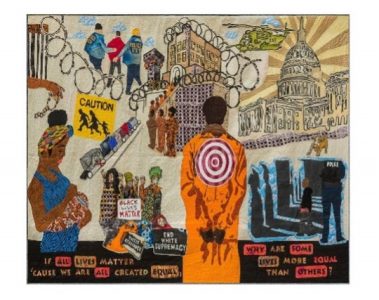The Business of Incarceration – PA TIMES Online
The Business of Incarceration - PA TIMES Online PA Times


The Cost of Incarceration and the Need for Reform
By Sarah Sweeney
April 26, 2024

I recently had the opportunity to facilitate a conversation with formerly incarcerated individuals about their experience of transformation from the inside out, and the impact that experience has had on them and their loved ones. We spent time exploring six questions about different aspects of incarceration, and participants were encouraged to share their experience verbally, in writing or simply observe.
One of the recurring themes each of the participants brought up involved the cost of incarceration and how that created barriers in maintaining contact with family and friends. Especially for low income or barrier impacted families, the rising cost of living and effects of generational poverty and trauma leave many without the support they might need throughout their stay. According to the Prison Policy Initiative, families spend about $2.9 billion dollars on costs associated with mass incarceration. Whether it be a phone call, envelope stamps, commissary, legal financial obligations or the physical or psychological costs; living behind bars can be an expensive place to be. As the facilitator of this conversation, I had the unique opportunity to witness the resilience and raw human vulnerability that comes with experiences of incarceration.
The Historical Context of Criminal Justice Reform
Around the early 1970’s court involvement in the criminal justice system came about through the President’s Commission on Law Enforcement and the administration of Justice. After generations of a hands-off approach, communities engaged in issues of crime and punishment began to push back and call for improvements in system reform. The Attica Prison Riot in 1971 furthermore pushed the courts for increased oversight and examination of policies that guide prison reform. According to the Bureau of Justice, in 1972 only 200,000 people were incarcerated in the United States and this has grown exponentially to 2.2 million as of 2017.
As public administrators it is important to understand the political history of certain reforms so that we can better comprehend how to support varied perspectives in our communities. Public safety versus crime and punishment are often at odds and require special handling when engaging with our constituents. Balancing conflicting priorities from a legislative perspective is a tricky operation when we must put forth efforts at engagement on multiple levels. At its most basic level, mass incarceration involves humans—it is important to keep this in mind when we are informing policies or pushing forward legislative priorities.
The Need for Rehabilitation and Community Support
Prison reform is certainly bound by social hierarchy and power dynamics between the court and justice system, and it is important as public administrators to identify which has precedence over the implementation of policy on the ground level. Exploring how criminal justice reform has transcended change in social governance across time, and transformed into its current policy field, is vital to ensure continued community development. Those incarcerated deserve a chance at rehabilitation and the opportunity to return to community after serving time for their crimes. However, society in the general sense may not agree with this opinion simply because of the historical bias against those who commit crimes against one another.
As leaders within our community, dedicated to equity and equality and aligned with social justice, we can hold ourselves accountable to make change at our local level. My experience as a facilitator and observer of those returning back to their community, encountering challenges and navigating injustices and imbalances has left me speechless. However I am impassioned as a witness to what must change. Those impacted by our criminal justice program are often subject to the worst forms of injustice and by listening and hearing their experiences and ideas on how the system can change is nothing short of empowering.
Supporting Vulnerable Individuals in Society
Improving our re-entry systems to encourage participation, supporting those coming back to community and adequately funding housing, mental health and substance use programming will go a long way in supporting those most vulnerable in our society. We know this to be true across all agencies within our communities, however where incarceration is involved, we must be more creative. Having the opportunity to observe and facilitate conversations on how we can do better as a society, for those engaged in the criminal justice system and impacted by these systems, allowed me to see small steps we can take to improve our communities from the ground up.
Focusing our advocacy and funding efforts toward establishing more equitable access to housing, employment and social services for those re-entering society post incarceration will go a long way in supporting all those in our communities. A team is made better by supporting its weakest link, and if we translate this to our local communities, who we engage with those most vulnerable and those within the criminal justice system, we can influence change on important levels. Public administrators must be at the forefront of these changes to ensure we are continuing the legacy of social change.
Author: Sarah Sweeney is a professional social worker and public administrator in Washington State. She may be contacted at [email protected]

Join us, as fellow seekers of change, on a transformative journey at https://sdgtalks.ai/welcome, where you can become a member and actively contribute to shaping a brighter future.
 patimes.org
patimes.org






